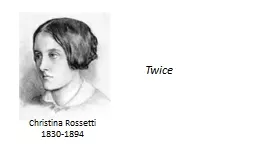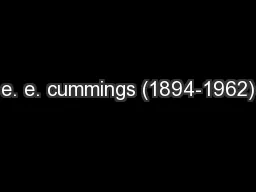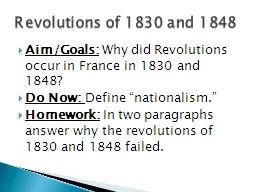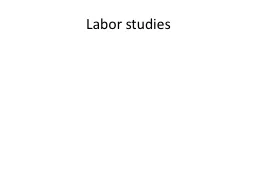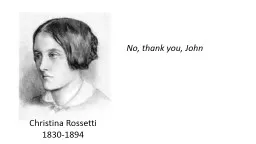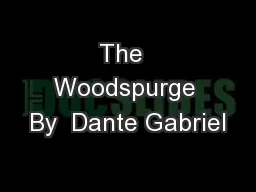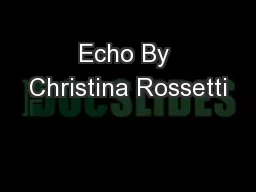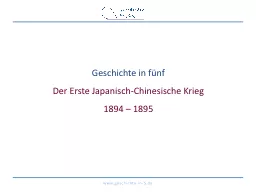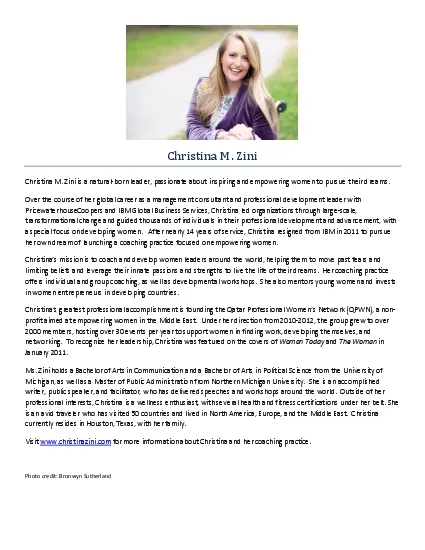PPT-Christina Rossetti 1830-1894
Author : tatiana-dople | Published Date : 2017-09-02
Twice Title date Twice I took my heart in my hand O my love O my love I said Let me fall or stand Let me live or die But this once hear me speak O my
Presentation Embed Code
Download Presentation
Download Presentation The PPT/PDF document "Christina Rossetti 1830-1894" is the property of its rightful owner. Permission is granted to download and print the materials on this website for personal, non-commercial use only, and to display it on your personal computer provided you do not modify the materials and that you retain all copyright notices contained in the materials. By downloading content from our website, you accept the terms of this agreement.
Christina Rossetti 1830-1894: Transcript
Download Rules Of Document
"Christina Rossetti 1830-1894"The content belongs to its owner. You may download and print it for personal use, without modification, and keep all copyright notices. By downloading, you agree to these terms.
Related Documents

